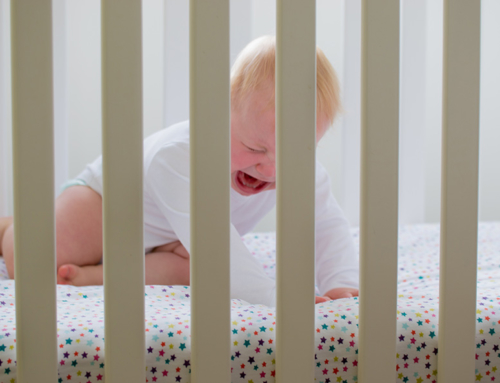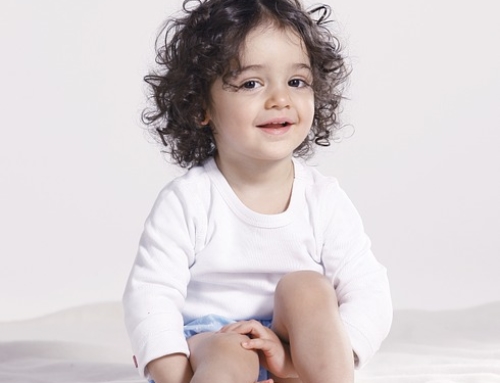
Sometimes older articles make the rounds and one from 2017 has been featuring online in the circles I’m in. The article – Mother-child bed-sharing trajectories and psychiatric disorders at the age of 6 years in the Journal of Affective Disorders – examined the question of how bedsharing may impact child mental health. The conclusions suggested that persistent bedsharing and early-only bedsharing were both associated with higher risks for psychiatric disorders and for internalizing problems. Although some people are ignoring the data because it doesn’t speak to them, I think it’s worth taking a closer look at what they found and what we can – if anything – extrapolate from that. (And I want to be clear now that the researchers were clear in their own limitations here so this isn’t a case of researchers making erroneous claims, but rather people possibly using this data in ways that don’t always match the findings or what we can take from the findings.)
The study itself included over 3500 children as part of this large cohort that was examined longitudinally. The families were all located in Pelotas, Brazil and were recruited at birth and for the purposes of this study, assessments at 3 months through 6 years of age were included. Pelotas is described as being relatively poorer than other areas in Brazil. Retention rates of these families over the 6-year period ranged between 90 and 96%, an astounding rate.
Bedsharing was defined as sharing the bed with a parent for part of or the whole night. The first question the researchers asked was to do with what patterns emerged as part of this. The assessments were done at 3 months, 12 months, 24 months, 48 months, and 6 years and four separate bedsharing patterns emerged:
- Non-bedsharers
- Early-only (done by 24 months, on average)
- Late-onset (started bedsharing after 12 months and is typically associated with worse outcomes because of the potential for 3rd variable issues like problems leading to the disrupted sleep that causes one to bedshare later in life)
- Persistent bedsharing
Notably, there were still children who bedshared in the early-only and late-onset groups at different times because the groups were determined using statistical techniques, not theoretical ideas of bedsharing. This can have merit but also raises some questions about the validity of the bedsharing as the only factor in predicting other outcome variables.
The first crucial bit of information here is that there were group differences in the bedsharing groups in terms of maternal and child characteristics. Specifically, the non-bedsharing group was more wealthy, mothers had higher education, were more likely to be white, live with a partner, and not have experienced depression during pregnancy. Obviously these are crucial variables when we look at later mental health outcomes. Interestingly, the late-onset group was closest to the non-bedsharers on these characteristics, putting the early-only and persistent bedsharing families as more similar with respect to SES, years of schooling, being a single parent, skin colour, parity (having 2 or more children), smoking during pregnancy, lower likelihood of a c-section, and less likely to have weaned at 3 months (but not by much).
The crux of the findings here was that the children in the early-only and persistent bedsharing groups had a higher risk of both any psychiatric disorder (which was assessed using a validated measure and run by psychologists and included all possibilities include PTSD, ADHD, etc.) and internalizing problems. Models were run with baseline variables and then researchers controlled for maternal and child characteristics. Of note, there was what is called “residual confounding” with SES which means that it couldn’t be fully controlled for in the analyses, so the researchers assessed the relationships in two groups – those of higher SES and those of lower SES in the early-only and persistent bedsharing groups.
Non-bedsharers were the reference group and all other groups showed some increase in psychiatric symptoms and internalizing problems relative to this group. The differences for the late-onset bedsharing group were non-significant. For the early-only group, there was a 40% increased risk for any psychiatric diagnosis and 60% increase for internalizing symptoms. For the persistent bedsharing group, the increased risk for any psychiatric diagnosis was 70% and for internalizing symptoms was 110%.
When these results were run by SES, there’s a different story. For the richest group of children, the highest risk of psychiatric disorders came from the late-onset bedsharing group (with an 80% increased risk) which is in line with other research finding that there is likely a 3rd variable affecting sleep as well as that other issue (as an aside, it was nice these authors included this group and cited my own 2013 paper in support of this inclusion). There was a significant effect of the early-only bedsharing group of an increased risk of 60%. The persistent bedsharing group did not show any significant increase in psychiatric disorders. For internalizing symptoms, only the early-only group had a significant increase (at 70%); the crude ratio was higher for both the late-onset and persistent groups, but was non-significant (which is normal depending on the variability between the groups).
When looking at the poorest children, persistent bedsharing was associated with twice the risk of any psychiatric disorder and 3x the risk of internalizing symptoms. Early-only bedsharing children showed an 80% increased risk of internalizing symptoms only. There was no effect of late-onset bedsharing relative to non-bedsharing.
What does this mean?
Not a ton, at least not from a causation perspective (and the authors were clear that this does not necessarily speak to causation). First, there is the issue of methodology. Given the vastly different findings when examining the groups by SES what we are likely seeing is a 3rd variable problem or reverse causation. There are so many issues that play into mental health outcomes that might also impact where a child sleeps. For example, the following were not ascertained:
- Maternal mental health (outside depression in pregnancy, crudely assessed)
- Family history of mental health
- Sleep disorders in infancy and beyond (like parasomnias, etc.)
- Child anxiety early in life (given internalizing is a reflection of anxiety and depression)
- Support systems for those in poverty
With reverse causation, the later diagnosis may be manifesting earlier and causing the bedsharing. For example, children with a later diagnosis of ADHD often have parents reporting poor sleep early on so they may sleep with their parents. Similarly, anxiety can be noted very early in life and be persistent and lead to bedsharing, but the bedsharing does not lead to anxiety.
The second issue is theoretical. The list of mental health issues have to be logically linked to bedsharing and in most cases, that’s just not possible. For example, the experience of PTSD requires exposure to a trauma so unless the suggestion is that the trauma is from bedsharing, it may end up with a relationship, but it’s not meaningful. Similarly, many other psychiatric disorders don’t logically make sense to link to bedsharing unless it’s through a reverse causation relationship.
The third issue is cultural. Bedsharing is more common in some cultures and subcultures and those cultures can also have other issues that would affect mental health, like SES or the experiences of intergenerational trauma, or high rates of addiction, and so on. This is similar to the 3rd variable issue but can extend beyond just those variables to affect all members of a group or subgroup, the way race plays into maternal mortality in the USA regardless of SES (though interacting to make it worse for lower-SES women of colour).
The final issue is interpretation. One possibility is that parents who sleep with their children are more aware of certain behaviours or anxieties because they manifest at night. They know if there are nightmares or struggles because they witness them. With kids who stop bedsharing at age 2, you may see more of a resistance to it from them which parents report. The fact is we don’t know how parents understood the child’s behaviours in terms of these outcomes and that would be worth looking into. (And the fact that these were all parent-report assessments is something to consider as well.)
At the end of the day, just looking at the trajectories is quite interesting, but the link to psychiatric disorders and internalizing is not anything to be afraid of in terms of bedsharing. Many cultures bedshare regularly with no negative effects on their children’s well-being. This is more data to have and one that is interesting and deserves follow-up research, but certainly shouldn’t make anyone think twice about bedsharing if it’s working for their family.
If you are still concerned, I recommend reading this summary of bedsharing beyond infancy.
___________
Reference: Santos, I. S., Barros, A. J., Barros, F. C., Munhoz, T. N., Da Silva, B. D. P., & Matijasevich, A. (2017). Mother-child bed-sharing trajectories and psychiatric disorders at the age of 6 years. Journal of affective disorders, 208, 163-169.






Leave A Comment